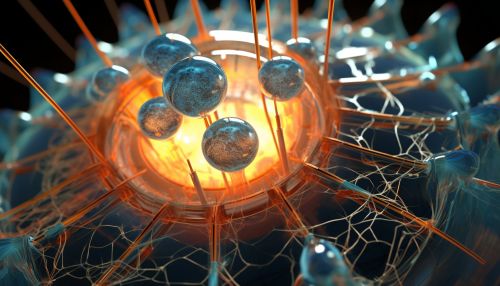Photoreceptor cell
Introduction
Photoreceptor cells are specialized type of neuronal cells that are capable of photo-transduction, a process which converts light (visible or not) into electrical signals. These cells are particularly important in the visual system, where they initiate the process of vision. There are two types of photoreceptor cells in mammals: rods and cones.
Structure
Photoreceptor cells are primarily located in the retina of the eye. They are part of the neural retina layer and are the neurons of the retina responsible for the conversion of light into electrical signals. Each photoreceptor cell consists of four distinct regions: the outer segment, the inner segment, the cell body, and the synaptic terminal.


Outer Segment
The outer segment of a photoreceptor cell contains a dense stack of membrane-bound discs. These discs are filled with photopigment molecules, which are responsible for the absorption of light. In rod cells, the photopigment is called rhodopsin, while in cone cells, there are three types of photopigments, each sensitive to a different range of light wavelengths.
Inner Segment
The inner segment of a photoreceptor cell contains the cell's nucleus, mitochondria, and other organelles. It is responsible for the cell's metabolic needs, including the production of photopigment molecules.
Cell Body
The cell body of a photoreceptor cell contains the cell's nucleus and is the site of normal cellular processes.
Synaptic Terminal
The synaptic terminal of a photoreceptor cell is the site where the cell communicates with other neurons. It releases neurotransmitters in response to changes in the cell's membrane potential, which are caused by the absorption of light by the photopigment molecules.
Function
Photoreceptor cells function as the primary initiators of visual perception. They absorb light and convert it into electrical signals, which are then transmitted to other neurons in the retina. This process, known as phototransduction, is a complex cascade of biochemical reactions.
Phototransduction
Phototransduction begins when a photon of light strikes a photopigment molecule in the outer segment of a photoreceptor cell. This causes a change in the shape of the photopigment molecule, which triggers a series of biochemical reactions. These reactions result in a change in the cell's membrane potential, which leads to the release of neurotransmitters from the cell's synaptic terminal.
Types of Photoreceptor Cells
There are two main types of photoreceptor cells in mammals: rods and cones. Each type of cell is specialized for different aspects of vision.
Rods
Rod cells are highly sensitive to light, which allows them to function well in low-light conditions. However, they do not provide color vision or sharp detail. Rods are more numerous than cones and are more prevalent in the peripheral retina.
Cones
Cone cells function best in bright light conditions and are responsible for color vision and visual acuity. There are three types of cone cells, each containing a different type of photopigment which is sensitive to a different range of light wavelengths.
Clinical Significance
Defects or damage to photoreceptor cells can lead to a variety of visual disorders, including retinitis pigmentosa, macular degeneration, and color blindness. Understanding the structure and function of these cells is crucial for the development of treatments for these and other vision-related disorders.
